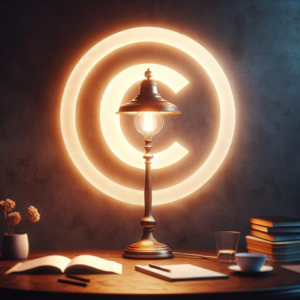
Sommaire
September 27, 2023, Paris Court of Appeal Case No. 21/12348
On September 27, 2023, the Paris Court of Appeal rendered a pivotal decision concerning copyright law in the realm of interior design and applied arts. At the heart of the case was the “Lyre” lamp, a unique creation by sculptor Philippe Cuny, which ignited a legal battle against architect Carlo Rampazzi for copyright infringement.
The “Lyre” Lamp’s case
In this case, Carlo Rampazzi, an interior designer, commissioned Philippe Cuny, a sculptor specializing in mirrors and lighting fixtures, to create several models of a “Lyre” lamp. Architect Carlo Rampazzi then published photos of the “Lyre” lamp on social media without obtaining prior authorization from the creator and without mentioning his name. Consequently, the creator, Philippe Cuny, sued the architect before the Paris Judicial Court for copyright infringement.
In May 2021, the Paris Judicial Court ruled in favor of Philippe Cuny, the creator of the lamp, condemning Carlo Rampazzi for copyright infringement.
Carlo Rampazzi appealed this decision to the Paris Court of Appeal. On September 27, 2023, the Paris Court of Appeal confirmed the lower court’s decision. The Court ruled on the originality of the lamp and then on the infringement, thereby rejecting the accessory theory raised by architect Carlo Rampazzi. The judges of the Court of Appeal reiterate that it is possible to combine design rights and copyright, provided that originality is demonstrated. It also recalls the consistent position of jurisprudence on the accessory theory according to which, firstly, the work must be presented in the background, not constituting a main subject, and secondly, the exploitation of the work must be unintentional.
The “Lyre” Lamp is protected by copyright
The Court first examined the question of whether the “Lyre” lamp was protected by copyright. As Philippe Cuny’s authorship was not disputed, the Court directly addressed the copyright protection of the “Lyre” lamp model.
The Court recalled that all applied art works must be original to be protected by copyright. Originality, distinct from novelty, is the manifestation of the author’s creative abilities, reflecting the imprint of their personality, to make ‘free and creative choices’.
Copyright protection will only be denied for a design if its form is exclusively dictated by the function of the product.
On the criterion of originality, the Court of Appeal concluded that the “Lyre” lamp met the originality criteria due to its distinctive features such as its asymmetrical harp shape, airy and sensual appearance, and its ability to evoke different images and emotions. Moreover, the Court noted that Mr. Cuny successfully reconciled the technical constraints of a lamp with a very personal representation, which evidenced the originality of his work.
The exclusion of the Accessory Theory
To avoid a conviction for infringement on the basis of unauthorized use (breach of the author’s reproduction right) and without mentioning the author’s name (breach of the right to paternity), architect Carlo Rampazzi invoked the accessory theory. This limitation to copyright is based on the European Directive of May 22, 2001, on the harmonization of certain aspects of copyright and related rights in the information society.
Constant jurisprudence considers that the so-called fortuitous inclusion exception applies when two cumulative conditions are met: the work must be presented in the background, not being the main subject, and the exploitation of the work must be unintentional.
In examining the contentious photographs, the Court of Appeal concluded that the “Lyre” lamp was deliberately highlighted and not accidental, thus excluding the application of this exception. In one of the photographs, the lamp was placed in the foreground with a setting that emphasized the object, while in another, although located in the background, it was still very visible in all its features and significant in the composition of the scene. The Court of Appeal specifies that in this case, it matters little that the lamps were modified and that they were ‘neither the object nor the goal of the communication’.
Therefore, the accessory theory could not validly be invoked for this case
Conclusion: A Precedent for Protection and Respect in Design
The Paris Court of Appeal’s ruling not only vindicated Philippe Cuny’s rights but also set a robust precedent for respecting intellectual property in the design and architectural sectors.

